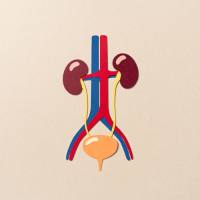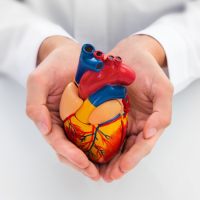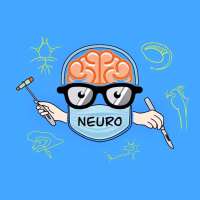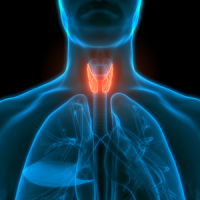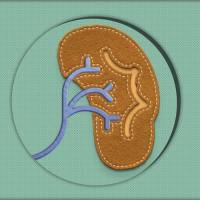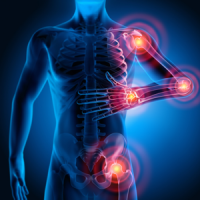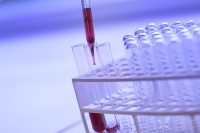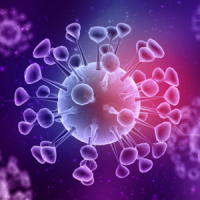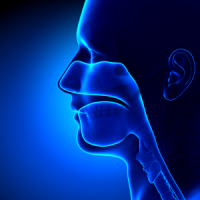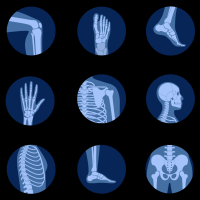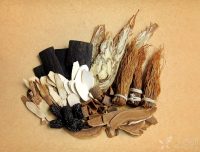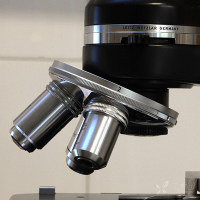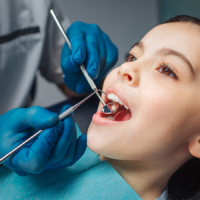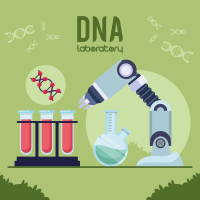【转帖】人体微生物群落:原生态、健康态和病态
人体微生物群落(microbiota)主要由细菌、真菌、病毒和寄生虫等组成,它们共存于人体管腔及内外表面,构成了一整套微观生态系统。这些微生物之间互相制约,各有各的“地盘”,谁也不能“越雷池半步”。因此,每种微生物的种群规模都不会发展得太大,也就不至于严重影响人体健康,这时我们的免疫系统可以容忍微生物的存在,形成某种程度的免疫耐受性。
然而,由于各种各样的原因,那种微生物种群之间“势均力敌”的状态随时都有可能被打破,从而导致种群分布的不平衡。比如,某人因感冒继发咽喉炎、支气管炎和肺炎时,必须服用抗生素消除病原细菌在呼吸道内造成的感染,这样就会杀死体内原有的一些“无辜”细菌,并把占有的地盘拱手交给其他病原体,这样就会引发微生物群落失调(dysbiosis),并可能最终引发疾病。
婴儿从母亲体内自然分娩时,其拥有的微生物群落均来自母体,可以形象地称之为“原生态”,但若为剖腹产,则婴儿会被医院的环境微生物“污染”,而不再是纯粹的原生态。我们之所以强调原生态,是因为它的微生物组成是协同人体共同进化的产物,不会对人体健康产生不良影响。拥有原生态微生物群落的人,只有当他们步入老年后免疫功能逐渐衰弱时才会显示出疾病症状。
不过,在现代社会中,真正的原生态实际上早已不复存在了,因而只有“健康态”与“病态”两种形态之分,至于是否存在“过渡态”还有待商榷。在我看来,理想的健康态是“无菌”状态,但在这个充满微生物的世界里,人体内是不可能无菌的,我们只能追求并达到“少菌”状态。至于病态,应该是“多菌”(指数量而不是多样性)造成的,因为它打破了人体的免疫耐受性,就像“撕毁”了“停战协定”一样,敌我双方已经进入“战争”状态。
面对这种“混战”局面,即使智力高度发达的人类,所能使出的“镇压”手段也不多。首选方案当然是使用抗生素这一“杀手锏”,但会遭遇抗药性及“二次感染”(非目标微生物过度繁殖)两大难题。因此,真正能彻底解决问题的是“换菌”,就是用健康态菌群替换病态菌群。另外就是通过饮食和锻炼增大微生物群落多样性及增加益生菌数量。以下就分别介绍这几个制服有害微生物的招术。
第一招 粪菌移植,你接受吗?
粪菌移植就是把健康人提供的大便中的1000多种细菌移植给菌群失调的患者,将其病态微生物群落“彻底打倒”,并“重建”健康态微生物群落。粪菌移植在我国有着悠久历史,《肘后方》及《本草纲目》中就有“金汁”的记载,而国外也已开展了数千例粪菌移植治疗。2013年,美国首次将粪菌移植写入治疗复发性难辨梭状芽孢杆菌感染的临床指南,美国食药监局(FDA)将粪菌移植纳入观察性新药监管,第一例粪菌移植治疗克罗恩合并肠内瘘获得成功。
最近,据媒体报道,我国已成功研制出全球首套标准化粪菌移植智能粪菌处理系统,可以实现粪菌的自动采集、分离和纯化,使得粪菌移植能够实现全程质量可控,有望纳入标准化粪菌移植的临床指南中。不过,粪菌移植显然是个新生事物,不到万不得已的时候,国人的接受程度应该不高。粪便供体的健康状况不一,如何定义?每位粪便供体的微生物菌群不同,如何规范?现在粪便移植仅涵盖细菌,不足以保证微生物群落平衡。
第二招 经常锻炼和蛋白质饮食增大肠道微生物多样性
爱尔兰科学家调查了40位平均年龄为29岁的男性爱尔兰橄榄球运动员肠道微生物群落的健康状况,通过高通量微生物基因测序发现,经常运动和多吃蛋白质类食物,可以增加肠道微生物的多样性。与普通人相比,运动员体内的炎症指标很低,而各项代谢指标极好。该研究结果近日发表于最新出版的《肠道》(Gut)杂志上。
The Irish rugby team has exceptional guts: Exercise and diet impact gut microbial diversity
Date:
June 10, 2014
Source:
Teagasc
Summary:
Exercise and diet impact gut microbial diversity, according to recent research. The gut microbiota of athletes is more diverse than that of controls and this diversity is linked to exercise and protein consumption in athletes. Athletes also have lower inflammatory and improved metabolic markers relative to controls.
Scientists at the Science Foundation Ireland-funded Alimentary Pharmabiotic Centre (APC) at University College Cork and Teagasc Food Research Centre, Moorepark, have carried out a study in conjunction with the Irish Rugby Football Union that has revealed that exercise and associated dietary changes influence gut microbial diversity. The research is published this week in the journal Gut.
The importance of our gut microbes to health and defence against disease is becoming ever more apparent. In particular, high microbial diversity has been associated with increased health whereas a low diversity of gut microbes has been associated with several diseases and syndromes, including obesity.
To investigate the impact of exercise and diet, scientists at the Alimentary Pharmabiotic Centre studied a group of "elite" athletes -- the Irish Rugby football team. The study was carried out with 40 male elite professional rugby players (mean age 29; mean BMI = 29.1) immediately prior to the last Rugby World Cup. Because of the physical size of modern rugby players, two groups of healthy male controls of similar age but with BMIs of >28 and <25 were used.
This study highlighted that the gut microbiota of our National Rugby team had a very high diversity relative to the Irish general public (as revealed by High Throughput Sequencing).
The athletes are an exceptional group in terms of their dietary intake, fitness/endurance and now we know, in relation to their gut microbiota! This high diversity is particularly linked with exercise and protein consumption and suggests that eating specific proteins and/or exercise can provide a means of increasing microbial diversity in the gut.
This is the first report that exercise increases microbial diversity in humans. While we and others have previously shown that diet influences microbial diversity, we can now report that protein consumption, in particular, positively correlates with microbial diversity.The study poses new questions and the Cork team is now prospectively testing the impact of exercise on the microbiota in amateurs of various degrees of fitness and will distinguish the effects of exercise from associated dietary changes.
Story Source:
The above story is based on materials provided by Teagasc. Note: Materials may be edited for content and length.
Journal Reference:
S. F. Clarke, E. F. Murphy, O. O'Sullivan, A. J. Lucey, M. Humphreys, A. Hogan, P. Hayes, M. O'Reilly, I. B. Jeffery, R. Wood-Martin, D. M. Kerins, E. Quigley, R. P. Ross, P. W. O'Toole, M. G. Molloy, E. Falvey, F. Shanahan, P. D. Cotter.Exercise and associated dietary extremes impact on gut microbial diversity.Gut, 2014; DOI: 10.1136/gutjnl-2013-306541
第三招 面包增加益生菌数量
最新研究成果显示,柑橘类水果中的果胶与其他成分共同作用,可以杀死人体肠道中的益生菌,而多吃面包可以增加乳酸菌的数量,因而对健康有益。38位健康成人参与实验,饮食构成问卷调查与粪便微生物分析相结合。该研究结果发表在近日出版的《农业及食品化学杂志》(Journal of Agriculture and Food Chemistry)上。
White bread helps boost some of the gut's 'good' microbes
Date:
June 11, 2014
Source:
American Chemical Society
Summary:
White-bread lovers take heart. Scientists are now reporting that this much-maligned food seems to encourage the growth of some of our most helpful inhabitants -- beneficial gut bacteria. In addition to this surprising find, a new study also revealed that when looking at effects of food on our 'microbiomes,' considering the whole diet, not just individual ingredients, is critical.

White-bread lovers take heart. Scientists are now reporting that this much-maligned food seems to encourage the growth of some of our most helpful inhabitants -- beneficial gut bacteria.Credit: © Sasajo / Fotolia[Click to enlarge image]
White-bread lovers take heart. Scientists are now reporting that this much-maligned food seems to encourage the growth of some of our most helpful inhabitants -- beneficial gut bacteria. In addition to this surprising find, their study in ACS' Journal of Agricultural and Food Chemistryalso revealed that when looking at effects of food on our "microbiomes," considering the whole diet, not just individual ingredients, is critical.
Sonia González and colleagues note that the bacteria in our guts, or our microbiome, play an important role in our health. When certain populations of bacteria drop, people become more prone to disease. One of the most effective ways to maintain a good balance of the microbes living in our guts is through our diets. To figure out what dietary ingredients promote helpful bacteria, several studies have looked at the effects of individual fibers and probiotics. But few researchers had investigated the role of polyphenols, which are common in much of what we consume -- spices, teas, fruits and vegetables -- or how polyphenols and fibers together help balance our gut microbes. González's team wanted to fill that gap.
To do so, they asked 38 healthy adults questions about their diets and figured out which bacteria were present in the participants' stool samples. Their analysis revealed that pectin, a compound in citrus fruits, lowers the levels of some helpful bacteria. This is contrary to previous research on pectin alone. The researchers suggest that pectin interacts with other substances in oranges, leading to this unexpected effect. Their most novel finding, they said, was that white bread boostedLactobacillus, a group of beneficial bacteria.
The authors acknowledge funding from the Spanish Ministry of Science and Innovation.
Story Source:
The above story is based on materials provided by American Chemical Society.Note: Materials may be edited for content and length.
Journal Reference:
- Adriana Cuervo, Lorena Valdés, Nuria Salazar, Clara G. de los Reyes-Gavilán, Patricia Ruas-Madiedo, Miguel Gueimonde, Sonia González. Pilot Study of Diet and Microbiota: Interactive Associations of Fibers and Polyphenols with Human Intestinal Bacteria. Journal of Agricultural and Food Chemistry, 2014; 62 (23): 5330 DOI: 10.1021/jf501546a






